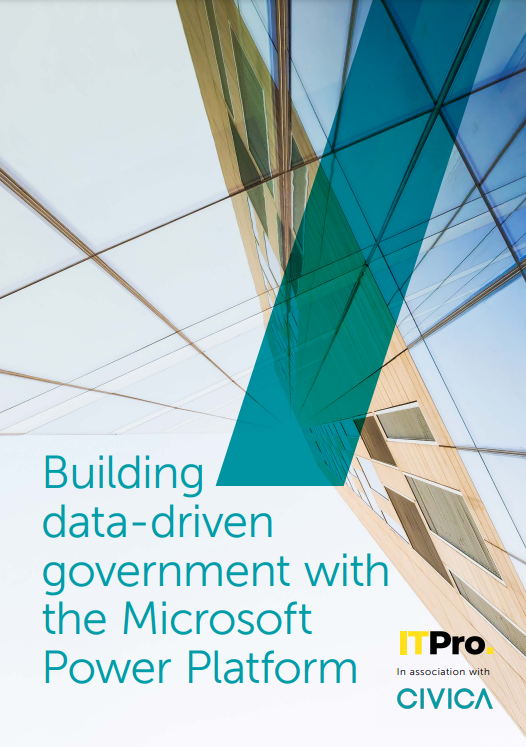The 'new normal' is pushing us closer to the edge
Businesses are tapping into edge computing to join up decentralised workforces, kicking this longstanding technology into the mainstream


Hybrid work has become a permanent staple in the way businesses organise their workforces. Indeed, more than half of workers (57%) surveyed as part of Envoy’s UK Return to the Workplace Report want to split their work time between their homes and offices. To mirror this shift, businesses also need to take a fresh approach to network architecture.
Businesses understand they need to be hyperconnected to not only serve their customers but also their workforces, especially given the hybrid nature of ‘new normal’. Traditional networks aren’t flexible enough to cope with this new reality, don’t have the computing power required, nor are they secure enough to support all business processes. Edge networks, on the other hand, might become the foundational layer onto which post-pandemic businesses are built.
Edge networks aren’t a replacement for cloud-based services, though, and reaping the power they offer means connecting and integrating edge computing with wider cloud services. Digital twins, for instance, are a good example of how edge and cloud services can be deployed in tandem to enhance how a business uses the digital assets it has available.
Working on the edge
The first major use case for widespread edge computing services might be in the autonomous vehicle industry. The need for very low latency connectivity, and the processing of vast quantities of data, demand high levels of decentralised, efficient computing power. In autonomous vehicles, it’s important for data to be processed at pace and on-site to improve safety and reduce accidents. As these networks take shape, general business processes may also decide to take advantage of the dispersed data and network infrastructure.
As the connected ecosystem of devices continues to expand, how businesses tap into the underlying networks to accrue value will also change. Organisations won’t just access edge networks for mission-critical applications, but also to improve business processes. Distributed architectures, here, are key to success. As the pandemic deepened, too, many companies found network security, in particular, needed overhauling. All eyes are turning to a model known as Secure Access Service Edge (SASE) to guarantee robust security across distributed networks. This is a security framework that blends security and network connectivity into a single platform delivered through the cloud.
Over time, meanwhile, the traditional management of workforces and the data they store, transport, and manipulate, has been centralised, often within vast colocation data centres. As workers moved to their homes, accessing these data centres pushed conventional networks to their limits. With mass remote working now the norm, the onus is on businesses to devise a new approach to support their dispersed workforces, while maintaining efficient and secure access to data and services. Bringing this data and services closer to each worker is transforming our definition of what network endpoints are, and where they need to be located.
Tapping into decentralised edge services is also how burgeoning technologies including 5G and the Internet of Things (IoT) will be used. This is particularly true for SMBs, which have the agility to embrace edge services at speed. Edge computing is also how hybrid cloud infrastructure might evolve while embracing this new, rapidly evolving connectivity ecosystem.
Sign up today and you will receive a free copy of our Future Focus 2025 report - the leading guidance on AI, cybersecurity and other IT challenges as per 700+ senior executives
“The concept of edge computing, and analysing data where it’s created, is fast gaining momentum, as organisations are discovering how they can quickly access only the most valuable data, in real-time, that will prove mission-critical to their business,” Peter Ruffley, CEO, Zizo tells IT Pro.
For dispersed workforces, the use case for edge computing will always be how this technology can improve their day-to-day working experience. Access to standard office applications and their associated data is one thing, but tapping into the edge can also pave the way for more advanced uses of mixed reality services, not just training scenarios but also as common communications channels.
Decentralised data connectivity
Writing in techUK's edge computing report, Seyvan Kellay, HPC & AI Specialist at Hewlett Packard Enterprise, stated: “Where edge computing becomes interesting and holds long term relevance is where companies start to realise and unlock the value of their data.”
RELATED RESOURCE

Building data-driven government with the Microsoft Power Platform
How to break down data silos and reap valuable data insights
The businesses that can efficiently capture data, and then analyse this information for actionable insights, will thrive post-pandemic. Remote workers accessing these vast datasets will need to do so within secure environments, too.
The connection between edge computing and data is, indeed, a powerful partnership, European vice president at global IT firm Persistent Systems, Rajasekar Sukumar, tells IT Pro. “With edge analytics, organisations can let the model lead the process, rather than analysing the data to build the model,” he adds. “The information processing happening on the edge, where data is created and consumed, can bring huge efficiency gains, reducing costs in the long run.”
Enterprises have always had to connect every aspect of their businesses together to create engaging and productive environments. For businesses, now, a greater reliance on network capabilities and the data processing power available with edge networks is an imperative they might not be able to ignore.
Sustainability is also a critical part of the equation, and the next generation of businesses need to factor this component into their thinking, points at Jon Healy, operations director at data centre consultancy Keysource. “About 90% of the world's data has been created in the last two years alone and with no signs of slowing this all requires infrastructure to manage,” he explains. “Those business that can build leaner, more scalable data infrastructures now will be positioned well to enable success later. The edge has a big role to play to deliver this.”
The network architectures that businesses must build to stay competitive, support their workforces and meet the demands of their customers, is in a state of flux. A new breed of edge computing has entered the mainstream as a direct consequence of the massive changes that have taken place in the last two years. Businesses have changed, and workforces have transformed into remote dynamic assets that need a new approach to data management and connectivity.
David Howell is a freelance writer, journalist, broadcaster and content creator helping enterprises communicate.
Focussing on business and technology, he has a particular interest in how enterprises are using technology to connect with their customers using AI, VR and mobile innovation.
His work over the past 30 years has appeared in the national press and a diverse range of business and technology publications. You can follow David on LinkedIn.
-
 Gender diversity improvements could be the key to tackling the UK's AI skills shortage
Gender diversity improvements could be the key to tackling the UK's AI skills shortageNews Encouraging more women to pursue tech careers could plug huge gaps in the AI workforce
-
 Researchers claim Salt Typhoon masterminds learned their trade at Cisco Network Academy
Researchers claim Salt Typhoon masterminds learned their trade at Cisco Network AcademyNews The Salt Typhoon hacker group has targeted telecoms operators and US National Guard networks in recent years
-
 Global IT spending set to hit a 30-year high by end of 2025
Global IT spending set to hit a 30-year high by end of 2025News Spending on hardware, software and IT services is growing faster than it has since 1996
-
 Infosys co-founder Narayana Murthy called for a 70 hour week last year — now he says that’s not enough
Infosys co-founder Narayana Murthy called for a 70 hour week last year — now he says that’s not enoughNews Murthy thinks longer hours akin to China’s '996' approach are the key to success
-
 AI tools are a game changer for enterprise productivity, but reliability issues are causing major headaches – ‘everyone’s using AI, but very few know how to keep it from falling over’
AI tools are a game changer for enterprise productivity, but reliability issues are causing major headaches – ‘everyone’s using AI, but very few know how to keep it from falling over’News Enterprises are flocking to AI tools, but very few lack the appropriate infrastructure to drive adoption at scale
-
 Microsoft could be preparing for a crackdown on remote work
Microsoft could be preparing for a crackdown on remote workNews The tech giant is the latest to implement stricter policies around hybrid working without requiring a full five days in the office
-
 Pegasystems teams up with AWS to supercharge IT modernization
Pegasystems teams up with AWS to supercharge IT modernizationNews The duo aim to create deeper ties between the Blueprint, Bedrock, and Transform services
-
 IT professionals aren’t budging on flexible work demands – and more than half say they’ll quit if employers don’t meet expectations
IT professionals aren’t budging on flexible work demands – and more than half say they’ll quit if employers don’t meet expectationsNews Analysis from Randstad shows 40% of UK-based IT pros have quit over a lack of flexible work options, while 31% of workers globally have done the same.
-
 'The tide seems to be turning towards office attendance': 64% of hybrid business leaders want staff back in the office – but many worry that enforcing RTO mandates will drive employees away
'The tide seems to be turning towards office attendance': 64% of hybrid business leaders want staff back in the office – but many worry that enforcing RTO mandates will drive employees awayAnalysis Many UK business leaders want their staff back in the office more frequently, but they’re scared to implement return to office (RTO) mandates in fear of worker revolts.
-
 Employees are dead set on flexible working arrangements – three quarters would turn down a role that didn't offer hybrid options as work-life balance becomes more important than pay
Employees are dead set on flexible working arrangements – three quarters would turn down a role that didn't offer hybrid options as work-life balance becomes more important than payNews New research shows workers are increasingly demanding flexible working arrangements from employers.
